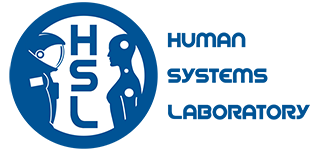| Title | Measurement of oscillopsia induced by vestibular coriolis stimulation |
| Publication Type | Journal Article |
| Year of Publication | 2007 |
| Authors | Sanderson, J., C. M. Oman, and L. Harris |
| Journal | Journal of Vestibular Research |
| MVL Report Number | 07.18 |
| Abstract | We demonstrate a new method for measuring the time constant of head-movement-contingent oscillopsia (HMCO) produced by vestibular Coriolis stimulation. Subjects briskly rotated their heads around pitch or roll axes whilst seated on a platform rotating at constant velocity. This induced a cross-coupled vestibular Coriolis illusion. Simultaneous with the head movement, a visual display consisting of either a moving field of white dots on a black background or superimposed on a subject-stationary horizon, or a complete virtual room with conventional furnishings appeared. The scene’s motion was driven by a simplified computer model of the Coriolis illusion. Subjects either nulled (if visual motion was against the illusory body rotation) or matched (if motion was in the same direction as the illusory motion) the sensation with the exponentially slowing scene motion, by indicating whether its decline was too fast or too slow. The model time constant was approximated using a staircase technique. Time constants comparable to that of the Coriolis vestibular ocular reflex were obtained. Time constants could be significantly reduced by adding subject-stationary visual elements. This technique for measuring oscillopsia might be used to quantify adaptation to artificial gravity environments. In principle more complex models can be used, and applied to other types of oscillopsia such as are experienced by BPPV patients or by astronauts returning to Earth. |
